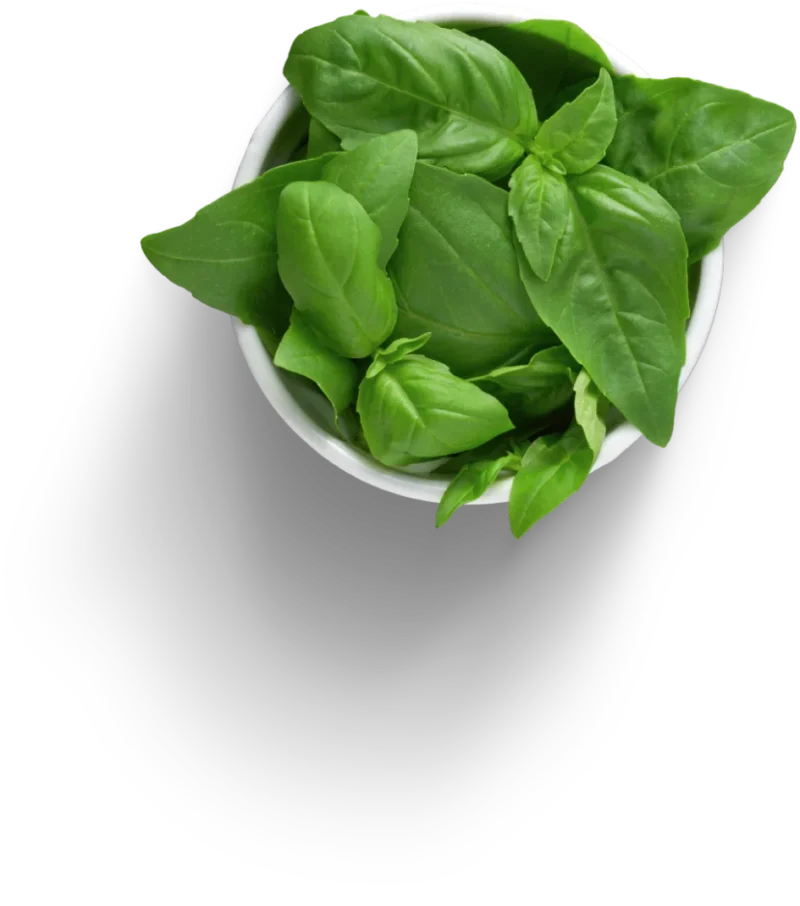Hey there, fellow foodies! Let’s talk about something that makes our taste buds dance – artisan pizza. This isn’t your average, run-of-the-mill, grab-and-go pizza. We’re diving into the world of pizzas that are so good, that they should have their fan clubs.
It is like the jazz of the food world: soulful, rich in heritage, and always a delight. From its humble beginnings in the heart of Italy to becoming a global sensation, it’s a story worth salivating over.
So, let’s grab a slice (we won’t judge if it’s your second… or third!)
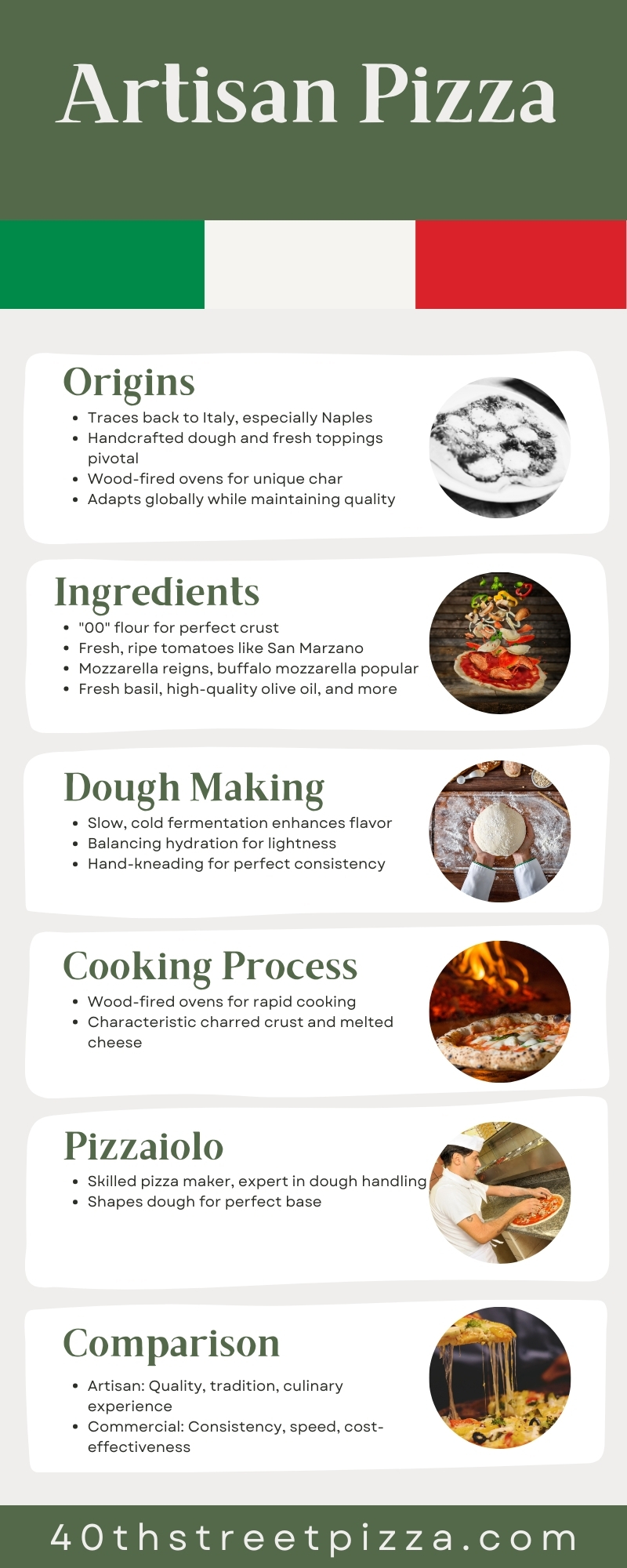
Roots & Evolution
| Characteristic | Explanation |
|---|---|
| 📍 Origins | Artisan pizza traces its roots back to Italy, especially Naples, where traditional pizzas with simple, quality ingredients began. Its origins date back to the 18th century when street vendors would sell flatbreads topped with local ingredients to the city’s working class. |
| 🍕 Naples’ Influence | This city is crucial to the history of pizza and is known for its handcrafted dough and fresh, simple toppings. |
| 🔥 Wood-Fired Ovens | These ovens, a staple in traditional pizza making, cook pizzas quickly, giving them a unique, delicious char. |
| 🌐 Global Spread | As pizza traveled, it adapted to new cultures, but this pizza always stayed true to its quality and traditional roots. |
| 🎨 Artisan Today | Chefs worldwide embrace the original Neapolitan style, using local ingredients and adding personal twists while respecting traditional methods. |
| 📜 Tradition and Innovation | A Tasty Tale: Artisan pizza is a blend of tradition and innovation, keeping the rich history alive in every mouthwatering slice. |
Ingredients: The Heart of Artisan Pizza
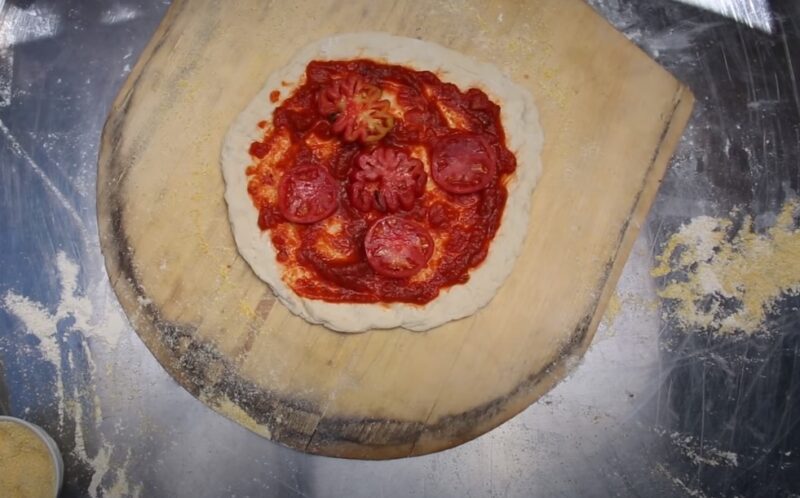
These pizzas are handmade with the highest quality ingredients and can include a variety of wood-fired pizza toppings.
They cook faster than other methods and can even be healthier than other types of pizza. This includes the flour used for the dough, the tomatoes, and the cheese. Artisan pizza chefs are particular about their ingredients’ origins, freshness, and overall quality.
Here’s a list of the most common stars of the show, each bringing its own character to create that perfect slice of heaven.
- Flour 🌾 – The base of the dough and the backbone of every pizza. Artisan pizzas often use high-quality, finely ground “00” flour for that perfect crust.
- Water 💧 – Essential for the dough, the purity and temperature of water used can subtly affect the dough’s texture and taste.
- Yeast 🦠 – The magical ingredient that makes the dough rise. Whether fresh, dried, or a natural starter, yeast is crucial for flavor and texture.
- Salt 🧂 – A pinch of good quality sea salt not only enhances the dough’s flavor but also strengthens gluten development.
- Tomatoes 🍅 – Fresh, ripe, and often hand-crushed, tomatoes for the sauce are chosen for their balance of sweetness and acidity. San Marzano tomatoes are a popular choice.
- Cheese 🧀 – Mozzarella reigns supreme in artisan pizzas, especially the fresh, creamy buffalo mozzarella. Other varieties like fior di latte are also common.
- Olive Oil 🫒 – A drizzle of extra-virgin olive oil adds depth and richness to both the dough and as a finishing touch on the baked pizza.
- Basil 🌿 – Fresh basil leaves are a classic topping that adds a burst of color and a fresh, herby flavor.
- Meats 🍖 – For those who like a bit of meat, choices like prosciutto, salami, or homemade sausage are popular, prized for their quality and flavor.
- Vegetables 🌶️ – Grilled or fresh, veggies like bell peppers, onions, and mushrooms add texture and layers of flavor.
- Garlic 🧄 – A little garlic goes a long way in adding a punch to the sauce or as a topping.
- Seasonal Specials 🍍🍑 – Some artisans like to play with seasonal ingredients, adding unique toppings like figs, pears, or even pumpkin for a twist.
The Art of Dough Making
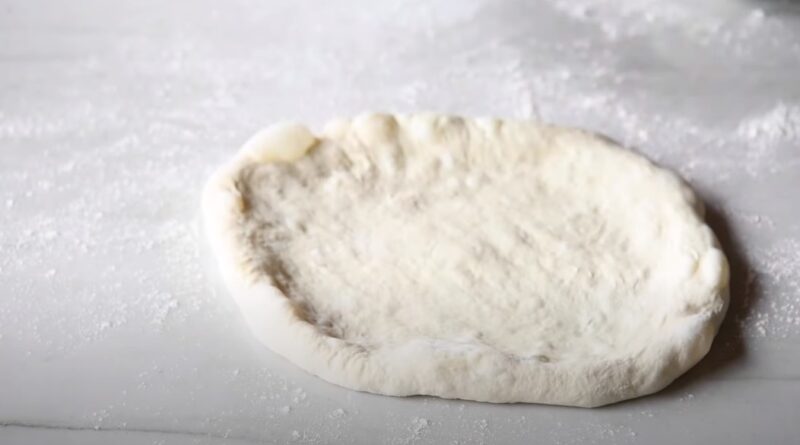
The dough is the foundation of any pizza, and in the case of artisan pizza, it’s where the artistry begins. Traditional techniques are employed in making the dough, which often involves hand-kneading.
The choice of flour is crucial, with many artisans opting for types like “00” flour, a finely ground Italian variety. The dough is typically left to rise slowly, sometimes for as long as 48 hours, which enhances its flavor and texture.
Choosing the Right Flour
- 00 Flour: This finely ground Italian flour is a favorite among artisans for its ability to create a light, airy crust.
- Whole Wheat & Alternative Flours: For a twist, some artisans experiment with whole wheat or alternative flours like spelled or buckwheat for unique flavors and textures.
The Kneading Process
- Hand-Kneading: Old-school and therapeutic, hand-Kneading is all about feeling the dough and bringing it to the perfect consistency.
- Minimal Mechanical Intervention: Some artisans use mixers but always with a gentle touch, ensuring the dough isn’t overworked.
The Fermentation Magic
Crafting the perfect pizza starts with mastering the art of fermentation, where patience unlocks a symphony of flavors and textures in the dough.
- Slow Fermentation: Letting the dough rise slowly, often for 24 to 48 hours, allows for flavor development and a desirable texture.
- Cold Fermentation: Many artisans opt for refrigerating their dough during the rising process to further enhance the flavor complexity.
Hydration Levels
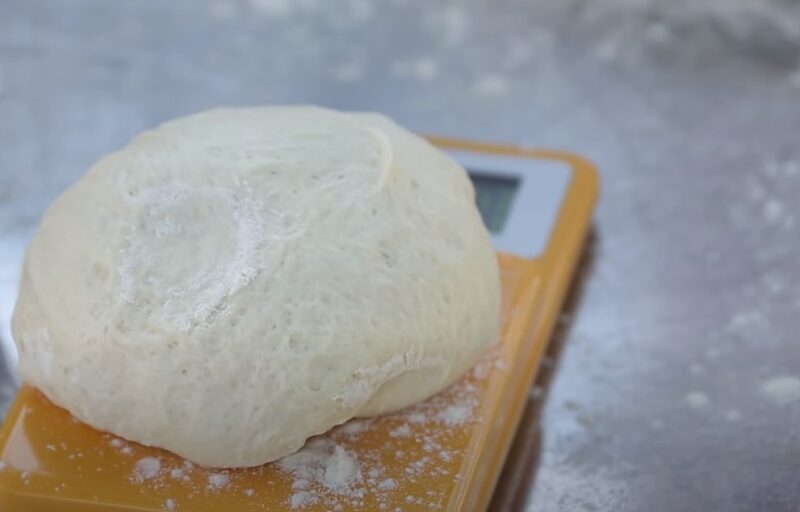
- High Hydration Doughs: A wetter dough (with a higher water-to-flour ratio) can lead to a lighter, more bubbly crust.
- Balancing Act: It’s all about finding that sweet spot where the dough is hydrated enough for lightness but still workable.
Salt and Yeast: The Flavor Enhancers
- Sea Salt: A dash of good quality sea salt can quite uplift the dough’s flavor.
- Yeast Choices: Whether it’s fresh yeast, dry active, or a natural starter, each type contributes differently to the dough’s rise and flavor.
The Shaping Art
- Gentle Stretching: Artisans often stretch the dough by hand, respecting its structure and avoiding rolling pins that can deflate the beautiful air pockets.
- Edge Crafting: Shaping the edges for that perfect crust that’s crispy on the outside, and soft and airy on the inside.
Final Touches
- Room Temperature Resting: Before baking, letting the shaped dough rest at room temperature ensures it’s not too tense or cold, which is crucial for achieving the perfect bake.
The Cooking Process

Artisan pizzas are usually cooked in wood-fired ovens. These ovens reach high temperatures, often above 800 degrees Fahrenheit, allowing the pizza to cook rapidly, often in just a few minutes.
This quick cooking process is key to achieving the characteristic charred crust and perfectly melted cheese, hallmarks of a great artisan pizza.
Quality Over Quantity
Regarding toppings, artisan pizzas often feature a “less is more” philosophy. Instead of a heavy load of various toppings, the focus is on a few high-quality ingredients that complement each other.
This could mean using a special type of mozzarella, fresh basil, and hand-crushed San Marzano tomatoes.
Pizzaiolo

Artisan pizza is more than just a quick meal—it’s a work of culinary art. At the heart of this delicious creation is the pizzaiolo, which is just a fancy word for the pizza maker.
Think of the pizzaiolo as a skilled artist. They’ve honed their craft through training and practice, learning the traditional secrets of pizza-making. It’s like they’ve attended a pizza university!
When they’re in the kitchen, they handle the dough with care, almost like a potter shaping clay. The way they stretch it, toss it, and feel its texture—it’s all part of their expertise. And just like an artist with a canvas, they know exactly how to create that perfect base for toppings.
But here’s where it gets interesting: the pizzaiolo’s intuition comes into play. They’ve made so many pizzas that they can sense when the dough is just right. It’s like they have a pizza sixth sense!
Artisan Pizza vs. Commercial Pizza
Commercial pizzas, often found at fast-food chains, prioritize consistency, speed, and cost-effectiveness. In contrast, artisan pizzas focus on quality, traditional methods, and the culinary experience.
This difference is evident in every aspect of the pizza, from the dough to the cooking process and the final taste. The artisan variant is among the most widespread trends in this day and age.
FAQs
Final Words
And that, my friends, is the delectable world of artisan pizza! It’s more than just a meal; it’s a canvas of culinary artistry. From the bustling streets of Naples to your local pizzeria, each slice of artisan pizza carries a piece of history and a burst of flavors that’s as rich as its origins.
So next time you’re savoring that perfectly charred crust and those top-notch toppings, remember the journey it’s been on. Artisan pizza isn’t just food; it’s a celebration of tradition, innovation, and everything good in the culinary world. Here’s to many more slices of this heavenly creation!




